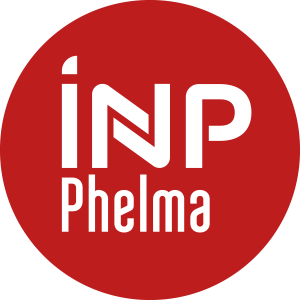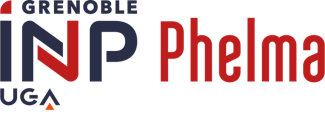Number of hours
- Lectures 5.0
- Projects 0
- Tutorials 5.0
- Internship 0
- Laboratory works 10.0
- Written tests 0
ECTS
ECTS 2.0
Goal(s)
This course present some advanced tools for image analysis.
The first part of the course is devoted to review some advanced linear and non linear filtering techniques.
The second part deals with image segmentation (i.e., the partitioning of an image into regions), description of the image regions and classification.
The course ends giving some outlines on video processing and analysis of 3D images.
The lab sessions (BE) associated to this course will allow the students to do some practice on the use of some of the techniques presented during the course. Students will work in groups of two and are requested to submit a report detailing their work.
The cours will be taught in English. However, if needed interactions can be done also in French.
The assignments of the lab sessions will be in English, the reports can be either done in English or French.
Content(s)
Outline of the course
1) Introduction to the course and image color spaces
2) Mathematical morphology (advanced operators)
3) Advanced filtering
4) Edge detection
5) Segmentation part I
6) Segmentation part II
7) Region descriptors and classification
8) Basics on video processing and 3D image analysis
Prerequisites
Basic concepts of image processing (such as histogram, linear filtering, basic mathematical morphology, edge detection etc).
Session normale / First session
Evaluation rattrapable (ER) / ER assessment : devoir surveillé écrit de 2h / 2 hours supervised written exam
Evaluation non rattrapable (EN) / EN assessment : comptes rendus de BE / Lab reports
Si situation 100% distancielle / If distant learning mandatory:
Evaluation rattrapable (ER) / ER assessment : Projet personnel / Personal project
Evaluation non rattrapable (EN) / EN assessment : Project collectif / Group project
Session de rattrapage / Second session
EN : Evaluation non rattrapable / EN assessment: Retaking this assessment is not possible
Rapport de BE : 40 %, Projet individuel : 60 %
Final grade = Rapport de BE : 40 %, Projet individuel : 60 %
Si situation 100% distancielle / If distant learning mandatory:
Note finale = 0,6 x projet personnel + 0,4 x Project collectif + 2 pts projet optionnel
Final grade = 0.6 x Personal project + 0.4 x Group project + 2 pts optional project
Main references of the course.
Gonzalez, Rafael C., and Richard E. Woods. "Digital image processing." (2002).
Szeliski, Richard. Computer vision: algorithms and applications. Springer, 2010. (available at http://szeliski.org/Book/)
Some of the concepts presented at the course can be found in the following references.
Soille, Pierre. Morphological image analysis: principles and applications. Springer-Verlag New York, Inc., 2003.
Sapiro, Guillermo. Geometric partial differential equations and image analysis. Cambridge university press, 2006.
Gonzalez, Rafael C., Richard Eugene Woods, and Steven L. Eddins. Digital image processing using MATLAB. 2004.



